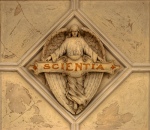Last week I talked a bit about parisitoid fly larvae. Now, the genomes have has been published for three species of parisitoid wasps in Science. These guys are every bit as brutal as the flies, and then some. They forcibly inject their eggs into their insect hosts, often caterpillars. Some species inject multiple eggs while other inject a single egg that later divides into many cloned larvae that form a colonial social hierarchy within their host. Once they mature, the larvae burst out the side of their host. However, even this insult isn’t the end of the torture for the unfortunate caterpillar. The larvae employ mind controlling chemicals to force the caterpillar to use its silk to build them a cocoon, and then watch over its pupating murderers until it keels over dead.
Parisitoid wasp larvae from National Geographic’s, “In the Womb.” Watch in high quality for maximum revulsion.
Nature, you are one psychotic bitch.
Read this review for a wider overview of parasitoid wasps and their contributions to pest control and biological sciences, including discoveries made in the recent genomics work.
One interesting point jumped out at me. The parisitoid wasps are insanely diverse, with species estimates exceeding 600,000. Entomologist Michael Strand even posits that,
There’s a really compelling argument that these parasitoid wasps may be more diverse than beetles[.] Virtually every arthropod on Earth is attacked by one or more of these parasitoid wasps.
This extreme diversity seems to be tied to rapid evolvability (a concept that I have noted before in regards to arthropods) and rigid host specificity. While some wasps are generalists, laying eggs in a variety of arthropods, the vast majority parisitize a specific host species. This specificity is the result of evolutionarily optimized venoms and mind-controlling toxins, tailor made for their host species, and leading to rapid divergence of parisitoid wasp populations as they discover new host animals. This is not unlike the algal specificity of the sea slug I discussed last week. Its biology is ideally suited for maintaining chloroplasts taken up from a single species of algae.
Researchers hope to develop parisitoid wasps as a research model and exploit their prey specificity for pest control that will benefit agriculture. With bio-engineered parisitoid wasp terminators coming soon to a pasture near you, aphids and caterpillars should just cut their losses and run for their lives.
References:
The Nasonia Genome Working Group, 2010. Functional and Evolutionary Insights from the Genomes of Three Parasitoid Nasonia Species. Science, 327(5963), 343-348.
















2 Responses to “Three parisitoid wasp genomes published”